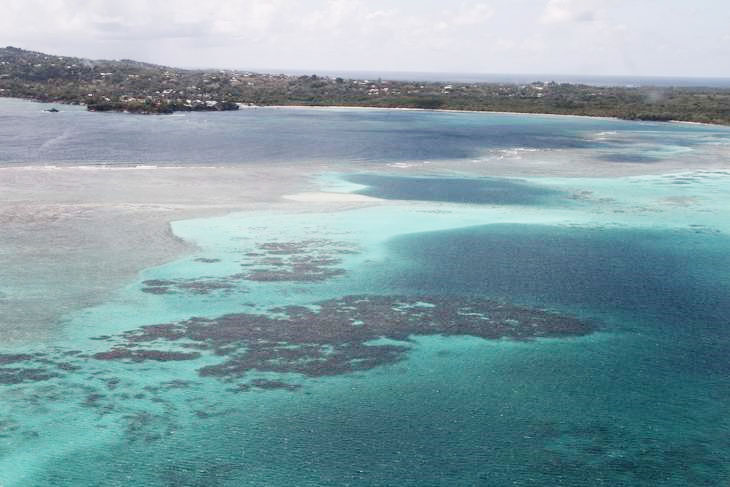(Trinidad Express) The Atlantic coast of Tobago may be battling waves of sargassum seaweed, but the Caribbean side of the island is all rays of sunshine, clean sandy beaches and clear waters for visitors, claims Tobago’s Secretary of Tourism and Transportation Tracey Davidson-Celestine.

Davidson-Celestine is saying that although several areas have been impacted by the seaweed, her division continues to work alongside the clean-up team to ensure the impact on residents and visitors is minimised.
She is also assuring visitors that Tobago’s tourism is not diminished by the naturally occurring sargassum. The secretary said the island continues to be an inviting place for those seeking to get away from the ordinary.
“People who come to Tobago don’t come only for the sun, and sea the island has to offer,” Celestine-Davidson said. “They also come for the warmth, for the culture and activities Tobago is so well known for, and for the authentic island experience.
“Even though the Atlantic side is affected by the sargassum, beachgoers and divers are enjoying our beautiful beaches and clear waters, which have remained unaffected by the seaweed. We are optimistic that through our collaboration we will be able to cope with this natural phenomenon.”
The Tobago House of Assembly (THA) has said the sheer volume of seaweed washing ashore is a natural disaster and it has begun a clean-up campaign to bring some relief to the areas most affected.
The THA has engaged the services of a number of heavy equipment operators who are working every day to remove the mounds of seaweed that have washed ashore.
Director of the Department of Natural Resources and the Environment Linford Beckles has spearheaded efforts to relieve those communities most affected, and has reiterated the commitment of the Division of Agriculture, Marine Affairs, Marketing and the Environment to work until the beaches are cleared.
Beckles said the seaweed that has washed ashore has formed a “wall”, preventing the remaining seaweed from coming inland. Removing the seaweed from the beach will allow the THA to collect all of the seaweed and dispose of it responsibly. Sites at remote areas near Speyside—at the Laow Estate and at Murchiston—have already been identified, and the seaweed is being transported to those locations for disposal.
Beckles said residents have also joined the campaign to clear the beaches.
“I have been in Speyside every single day since we had this amount of seaweed coming in and I’ve observed quite a number of the residents manually removing a lot of the stuff,” Beckles revealed. “They would have been able to do a tremendous amount of work and they should be congratulated. We look forward to this kind of involvement.”
The THA has already allocated $3 million for clean-up in the first instance, and is encouraged by the pledge of support from the Ministry of National Security to assist the assembly in removing the seaweed. The THA also continues to conduct research to look at the most efficient way to deal with any potential arrival of Sargassum in future.
Quick facts on Sargassum seaweed
What is Sargassum seaweed? Sargassum is one of two species of brown algae commonly found in the Caribbean. It does not attach to the ocean floor, and its movements depend on ocean currents.
What causes the influx in sargassum? Sargassum originates from the Sargasso Sea in the open North Atlantic Ocean near Bermuda, as well as the Northern Gulf of Mexico. This sea is estimated to hold up to ten million metric tons of Sargassum.
Why is it spreading? Its spread through the Caribbean is due to a rise in water temperatures and low winds, which affect ocean currents; research also links it to pollution and global climate change.
Is harmful it? Although it can smell as it decomposes, sargassum is not toxic to humans. It does not sting, although it leaves a black layer underneath as it decomposes on the beach.
Will the influx happen all year round? Sargassum does not necessarily affect the same location in the Caribbean all year. It is transported by currents, which means it affects multiple locations across the region at different times of the year.
Will the sargassum influx occur every year? This is not known for sure, but currently proposed efforts to develop prediction and alert systems would help answer this important question. Signs from the Eastern Caribbean suggest we’ll be seeing sargassum in the region periodically in 2015.

